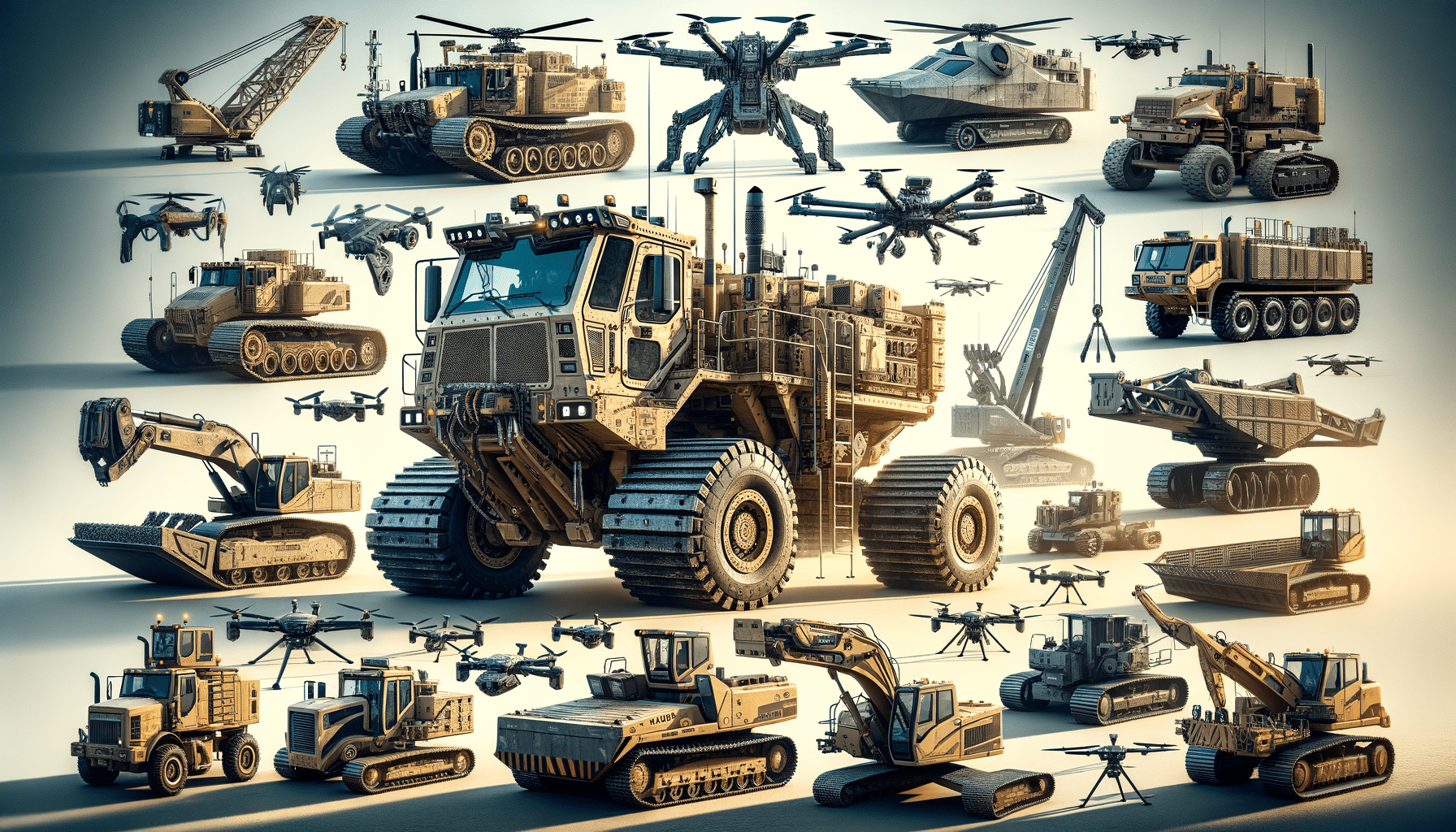
Heavy Machinery for Tactical Operations: Enhancing Efficiency and Safety
Introduction to Heavy Machinery in Tactical Operations
In the realm of tactical operations, efficiency and safety are paramount. Heavy machinery plays a crucial role in achieving these objectives, offering the power and versatility needed to navigate challenging environments. From construction to disaster response, the deployment of heavy machinery can significantly enhance operational success. This article delves into the various aspects of heavy machinery used in tactical operations, examining their importance, functionality, and the advancements that continue to shape this field.
The Role of Heavy Machinery in Tactical Operations
Heavy machinery is indispensable in tactical operations, providing critical support in various scenarios. These machines are designed to perform tasks that are beyond human capabilities, such as lifting massive loads, clearing debris, and constructing infrastructure in record time. In military operations, for example, armored bulldozers and excavators are used to create fortifications and clear obstacles, ensuring the safety of personnel and equipment.
Moreover, in disaster response, heavy machinery is essential for search and rescue missions. Excavators and cranes are often deployed to move rubble and debris, allowing rescue teams to reach trapped individuals quickly. The use of these machines not only accelerates the process but also reduces the risk to human life by minimizing the exposure of rescue workers to hazardous conditions.
Overall, the role of heavy machinery in tactical operations is multifaceted, encompassing construction, demolition, transportation, and rescue operations. Their ability to perform under extreme conditions makes them invaluable assets in both planned and emergency scenarios.
Key Types of Heavy Machinery Used
The variety of heavy machinery available for tactical operations is vast, each type serving specific purposes. Commonly used machines include:
- Bulldozers: Known for their strength and durability, bulldozers are used for clearing land, constructing berms, and demolishing structures.
- Excavators: These versatile machines are equipped with a bucket and arm, ideal for digging trenches, lifting heavy objects, and removing debris.
- Cranes: Essential for lifting and moving heavy loads, cranes are often used in construction and rescue operations.
- Loaders: Used for moving materials such as soil, sand, and gravel, loaders are crucial in both construction and disaster response.
Each of these machines is designed with specific features that enhance their performance in tactical operations. For instance, armored bulldozers are reinforced to withstand hostile environments, while amphibious excavators can operate in waterlogged areas. The diversity of heavy machinery ensures that there is a suitable option for every tactical need.
Advancements in Heavy Machinery Technology
The evolution of heavy machinery technology has significantly enhanced the capabilities of these machines in tactical operations. Recent advancements focus on improving efficiency, safety, and environmental impact. For example, the integration of GPS and telematics systems allows for precise control and monitoring of machinery, optimizing their performance and reducing fuel consumption.
Additionally, the development of autonomous and remotely operated machines has transformed tactical operations. These machines can be deployed in hazardous environments without risking human life, making them ideal for military and disaster response scenarios. Autonomous bulldozers and drones are now capable of performing complex tasks with minimal human intervention, increasing efficiency and safety.
Furthermore, the emphasis on sustainability has led to the creation of eco-friendly machinery. Electric and hybrid models are becoming more prevalent, reducing emissions and minimizing the environmental footprint of tactical operations. These innovations are shaping the future of heavy machinery, ensuring that they remain integral to tactical operations while addressing modern challenges.
Conclusion: The Future of Heavy Machinery in Tactical Operations
As technology continues to advance, the role of heavy machinery in tactical operations will only grow in importance. The ongoing development of more efficient, safer, and environmentally friendly machines promises to enhance the effectiveness of tactical operations across various fields. Whether in construction, military, or disaster response, heavy machinery remains a cornerstone of operational success, providing the strength and precision needed to tackle complex challenges.
Looking ahead, the integration of artificial intelligence and machine learning could further revolutionize the use of heavy machinery, enabling more adaptive and autonomous operations. As these technologies evolve, heavy machinery will undoubtedly continue to be a critical component of tactical operations, driving progress and innovation in the field.


